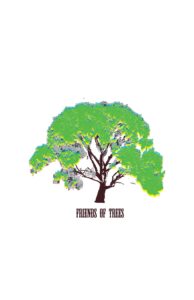At the Root: Trees Rule
By Guest Blogger: Eileen Stark, Portland, Oregon

By Guest Blogger: Eileen Stark, Portland, Oregon


We had a great tree planting in Irvington, Sabin, Grant Park, and Alameda neighborhoods last weekend (March 10, 2012). thanks are in order! Here are some of the folks we want to thank!
I’m sure there are more people to thank, please feel free to add them into the comment section. And, I’ll add more pictures here as they come in! Thanks, everyone for your help in adding to Portland’s canopy.
This year’s planting featured the volunteer effort of many young people. I’ve never seen that many young people volunteering together before – it was impressive. Someday I hope that these young people will come back and visit the trees they planted and smile.

Our planting day is Saturday March 10, 2012 and we’ll again be hosted by the Holladay Park Church of God at Tillamook and 21st Ave NE. starting at 8:30AM. We are looking for volunteers to plant trees and donations of delicious food for our work crews. If you’d like more information or would like to volunteer, please contact me at albertkaufman@gmail.com
T-shirts! This year we’ve hired a designer, Alan Rahi, who has made a special image just for this planting and we’ll be silk-screening at the event. Bring your t-shirts and canvas/cloth shopping bags and put a tree on it! Also, during lunchtime music will be performed by local artists, Ten Spiders.
For a variety of reasons I am encouraging people to plant fruit and nut trees in their yards and planting strips. This will increase the amount of food we’re providing for ourselves and other species and bring our community together as we harvest food with and for one another. Visit the Portland Fruit Tree Project‘s website for more information.
This year the City of Portland is offering a treebate to those who qualify. Find out more at https://pdx.be/treebate
Thanks to everyone who volunteered for our fantastic Irvington tree planting last March in 2011. Between us and the other 3 nearby neighborhoods we planted 212 trees. I mention this because for anyone wanting to join us in our next planting, the time to order trees is now and the website to order from is: https://friendsoftrees.org/order-street-and-yard-trees
Happy Winter moving into Spring,
Your canopy-loving Friends of Trees neighborhood coordinator for Irvington, Portland, Oregon, United States, Earth: Albert Kaufman
1.26.2021 – Check out a recent Ten Spiders show
We had a great day planting trees with Friends of Trees on Saturday, March 13th. Starting with our breakfast at the Holladay Park Church early in the morning through a delicious lunch held after the planting – supplied by residents of the Irvington, Grant, Sabin and Alameda neighborhoods.
I want to thank the following people and businesses for their support in our efforts.
Friends of Trees – especially Jesse Batty and Erica Timm who led the day of planting
The neighborhood coordinators for each neighborhood
Neil Davidson – Alameda
Lisa Johnston-Smith – Sabin
Angela Gusa – Grant Park
Albert Kaufman – Irvington
Holladay Park Church – our wonderful host!
Helen Bernhard Bakery – baked goods
Caffee D’arte – Coffee
Starbucks on 15th & B’way – Coffee and more Coffee
Grand Central Bakery – pastries, yum
Costello’s Travel Caffee – pastries, more yum!
Penske Trucks – truck donation
Eric McClelland – Treeform Woodwork – drove to Boring and back to pick up our trees
City of Portland – Bureau of Environmental Services – a huge hand in many ways
Backyard Bird Shop – our main sponsors!
I could write a novella about the task of being a neighborhood coordinator for this event. It’s full of contacting neighbors, reaching out to businesses and interacting with the great staff at Friends of Trees. And, I enjoyed the fun of planting trees even more. Working with great crew leader, Karen, and crew assistant, David, we walked in a 5 block circle and planted 11 trees in 3 hours. This involved pulling the trees out of the truck, unwrapping each, making sure holes were the right size, involving homeowners and their kids, filling the holes in with dirt, and watering and staking them.
It was a rainy day, but our spirits were high. And when we returned to the basecamp, there were all of the other volunteers and crew leaders sitting down to a well-deserved bountiful lunch of soups, chilis, stews, bread, salads and deserts. It was a great time to swap stories, share smiles, and make some new friends beyond the crew that you’d been assigned to.
All in all, I’d say the day was a complete success. We planted 182 trees together and another 30 were planted the following Monday, bringing us to a grand addition of 212 trees for our 4 neighborhoods. These trees will add to the canopy of our neighborhoods – help reduce the amount of water going into the stormwater drains, shade us in the summer, provide us fruit and nuts, look beautiful, increase property values, and increase the safety of our neighborhoods.
If you didn’t get a chance to join us, please consider volunteering with Friends of Trees and see what fun it can be to plant trees in Portland. Also, Friends of Trees is a membership organization and I encourage you to become a member today. They do great work that makes our City more livable and our lives healthier and happier.
One happy tree planter!
Reviews for Albert Kaufman Top qualities: Great Results, Expert, High Integrity If you're looking for someone to setup and manage your Constant Contact account, Albert's the guy. He's enthusiastic, creative, and plugged in. He works well with clients, listening to what they want and incorporating … [Read More ...]
Copyright © 2026 · albertideation Child Theme on Genesis Framework · WordPress · Log in